Greetings community! Today I will talk about something that caught my attention from the first time I saw it. Absinth.
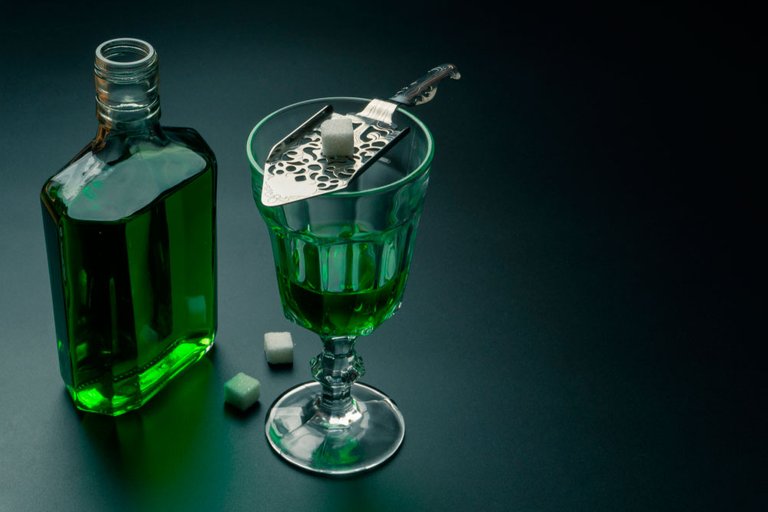
Siempre me he sentido atraída hacia todo lo misterioso y oculto. A finales de los 90´s, mientras miraba mi programa favorito de vídeos en la TV, pasaron por primera vez, el vídeo “The Perfect drug” de la banda Nine Inch Nails y lo que captó mi curiosidad no fue precisamente algo que vi sino algo que no se podía ver porque estaba censurado. Lo que me extrañó es que la parte que salía borrosa parecía ser una bebida, lo cual me dejó intrigada ya que no entendí porque censurarían una bebida. Unas semanas después volvieron a pasar el vídeo pero la versión sin censura. Ahí por fin pude ver qué era eso tan misterioso que estaba en la copa. Pues bien, era un líquido de un hermoso color verde esmeralda que parecía formar parte de un ritual o algo así. La botella que contenía ese líquido verde decía, Absinthe. Resuelta ya mi curiosidad ahora tenía que averiguar qué era esa bebida.
I have always felt attracted to everything mysterious and hidden. At the end of the 90's, while I was watching my favorite video program on TV, I saw the video "The Perfect drug" of the band Nine Inch Nails for the first time and what caught my curiosity wasn´t exactly something I saw but something that couldn't be seen because it was censored. What surprised me is that the part that came out blurred seemed to be a drink, which left me intrigued as I didn´t understand why they would censor a drink. A few weeks later the video was shown again but the uncensored version. There I could finally see what was the so mysterious that was in the glass. Well, it was a beautiful emerald green liquid that seemed to be part of a ritual or something. The bottle containing that green liquid said, Absinth. With my curiosity resolved, now I had to find out what that drink was.
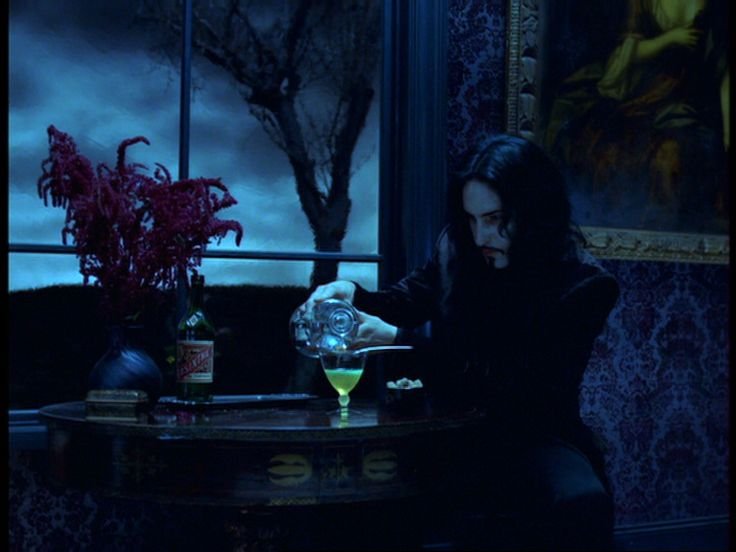
Con el tiempo, los estudios y todo eso olvidé el asunto hasta que un día, en Internet o en un programa de rock en la TV, no recuerdo bien, hicieron un comentario respecto a ella y pude conocer que el intrigante, hermoso y censurado líquido verde llamado Absenta, era una bebida alcohólica. Dicen que el ser humano se siente atraído de una manera incontrolable y casi natural por todo lo que esté prohibido. Pero ¿Qué es lo que tiene la absenta que la hace tan misteriosa? Vayamos al origen.
With time, studies and all that I forgot the matter until one day, on the Internet or on a rock show on TV, I don't remember well, they did a comment about her and I learned that the intriguing, beautiful and censored green liquor called absinth was an alcoholic drink. They say that the human being is attracted in an uncontrollable and almost natural way to everything that is prohibited. But what is it about absinth that makes her so mysterious? Let's go to the origin.
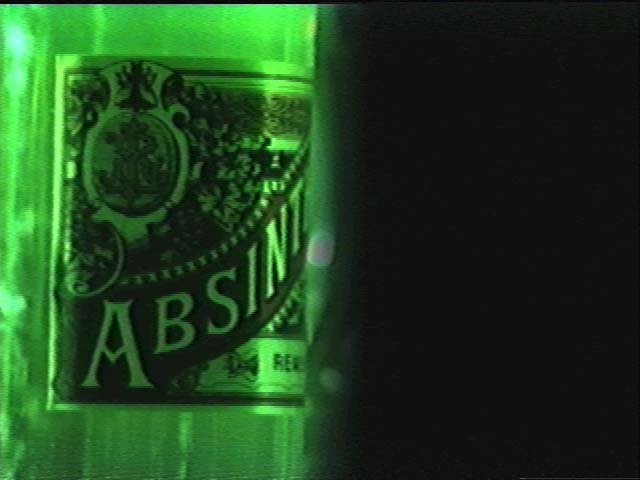
La absenta es una bebida alcohólica de altísima graduación elaborada a base de ajenjo. El ajenjo, es una planta perenne perteneciente a las compuestas de hojas color verde claro y flores amarillas que crece en Europa, el oeste de Asia y el norte de África, la cual se caracteriza por ser muy aromática y amarga y a su vez por poseer muchas propiedades medicinales. Su nombre científico es Artemisia Absinthium y de allí se extrae el nombre de esta bebida, la palabra absinthium proviene del griego αψινθιον (apsinthion) que significa “no bebible”. Es también conocida como “hierba incienso”. En los países de habla inglesa se le conoce vulgarmente como wormwood (gusano de madera) por sus poderosas propiedades para ayudar a combatir y expulsar cualquier tipo de parásitos y gusanos intestinales.
Absinth is a very high alcoholic drink made from absinthe. Absinthe, is a perennial plant belonging to those composed of light green leaves and yellow flowers that grows in Europe, West Asia and North Africa, which is characterized for being very aromatic and bitter and at the same time for having many medicinal properties. Its scientific name is Artemisia Absinthium and from there the name of this drink is extracted; the word absinthium comes from the Greek αψινθιον (apsinthion) which means “not drinkable”. It is also known as "frankincense herb". In English-speaking countries it is commonly known as wormwood for its powerful properties to help fight and expel any type of intestinal parasites and worms.
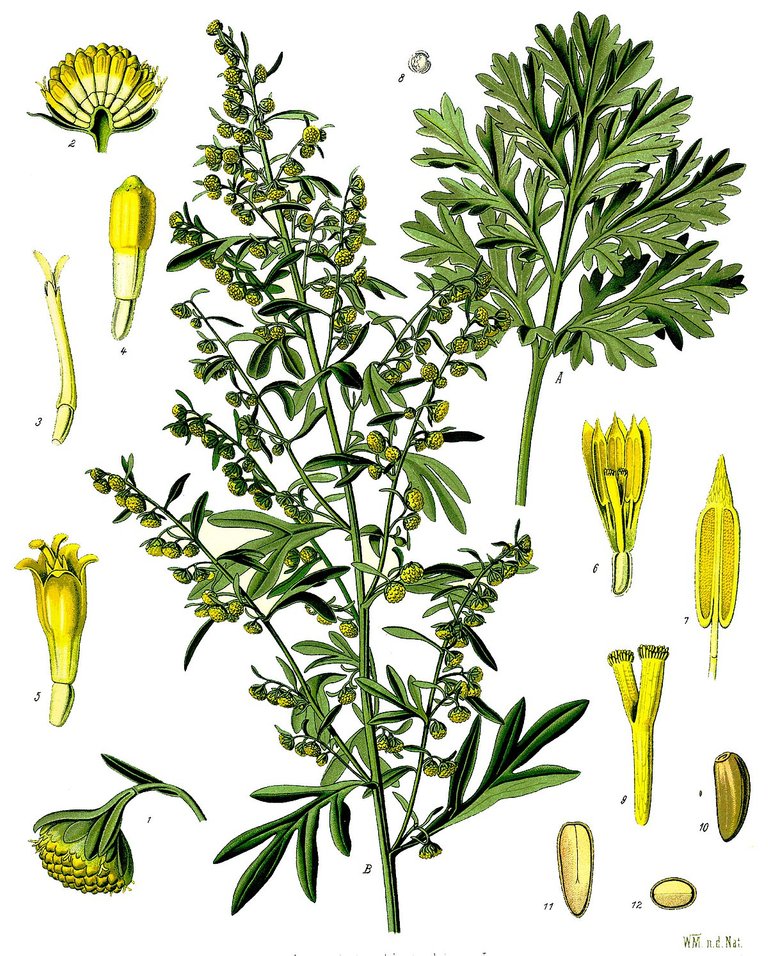
Antes de transformarse en una bebida misteriosa y prohibida, el ajenjo era empleado en la antigüedad para tratar muchas enfermedades gracias a sus propiedades antisépticas, carminativas, antihelmínticas y febrífugas. Sirios, egipcios y griegos dejaron testimonio de ello en textos y papiros e inclusive aparece registro de su uso en la Biblia. El ajenjo era usado en Grecia como antídoto al veneno de la cicuta y hasta existía una bebida llamada "absinthites oinos" (vino de ajenjo) que no tiene nada que ver con la absenta que conocemos.
Before becoming a mysterious and forbidden drink, absinthe was used in ancient times to treat many diseases thanks to its antiseptic, carminative, anthelmintic and febrifuge properties. Syrians, Egyptians and Greeks left testimony of it in texts and papyri and even a record of its use appears in the Bible. Absinthe was used in Greece as an antidote to hemlock poison and there was even a drink called "absinthites oinos" (absinthe wine) that has nothing to do with the absinth we know.
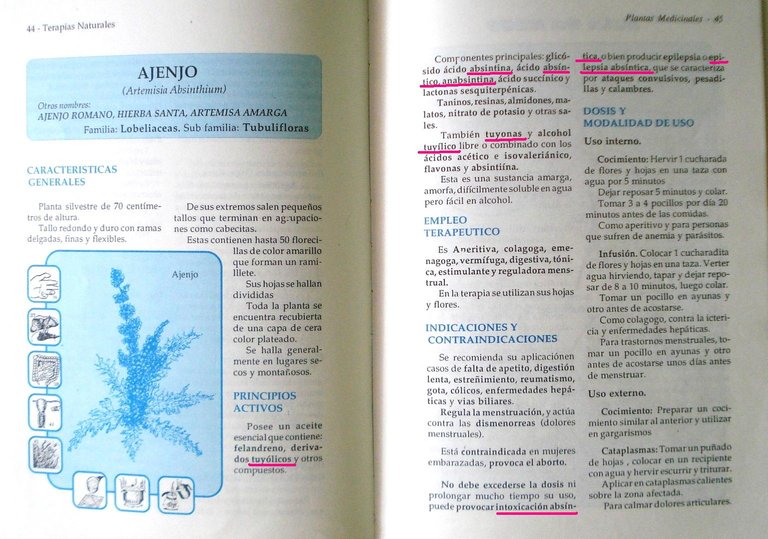
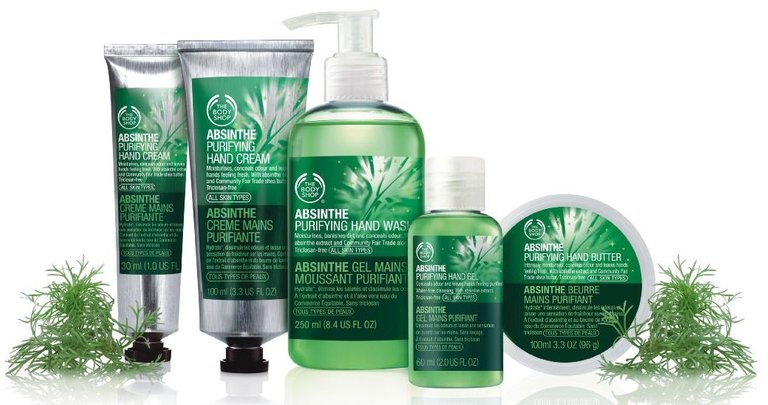
El origen de la absenta es algo incierto, sin embargo, la mayoría de las fuentes coinciden que a mediados del siglo XVIII, en el pequeño pueblo de Couvet, ubicado en la región Suiza de Val-de Travers, las monjas Henriod del convento de ese pueblo elaboraban un “extracto de ajenjo” que comercializaban como un elixir en la frontera franco-suiza, aunque según la creencia popular, la receta de esta bebida no era de ellas sino que la inventó en 1767, un médico francés, que había sido expatriado a Suiza, de nombre Pierre Ordinaire. La bebida inventada por este médico contenía, aparte de ajenjo como ingrediente principal, anís, melisa, hisopo y cilantro entre otras hierbas de la zona. Este elixir lo llamó “Extrait d´absinthe” (extracto de ajenjo) y permitía aprovechar las propiedades del ajenjo sin tener que degustar su amargo sabor.
The origin of absinth is somewhat uncertain, however, most sources agree that in the middle of the 18th century, in the small town of Couvet, located in the Swiss region of Val-de Travers, the Henriod nuns from the convent of that small town made an “absinthe extract” that they marketed as an elixir on the Franco-Swiss border, although according to popular belief, the recipe for this drink was not theirs but was invented in 1767 by a French doctor, who had been an expatriate to Switzerland, named Pierre Ordinaire. The drink invented by this doctor contained, apart from absinthe as the main ingredient, anise, lemon balm, hyssop and coriander among other herbs that grow in that area. This elixir was called “Extrait d´absinthe” (absinthe extract) and it allowed to take advantage of the properties of absinthe without having to taste its bitter taste.
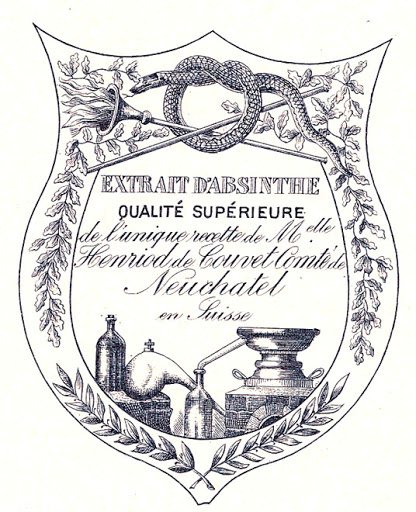
La bebida se fue haciendo muy popular, sobretodo entre los soldados franceses que la tomaban no sólo para aliviar los dolores de estómago, la fiebre y hasta el cólera, por ser el ajenjo un poderoso tónico del aparato digestivo, sino que también, gracias a su alto grado alcohólico se había convertido en una bebida habitual para las tropas cuando regresaban del frente de guerra y se reunían en los bares donde la misma se podía comprar. Hay que destacar que mucho antes de aparecer la absenta, el ajenjo era empleado para aromatizar diferentes tipos de bebidas alcohólicas, una de ellas por cierto, el Wermut, (palabra extraída de Wermutkraut, ajenjo en alemán).
The drink became very popular, especially among French soldiers who drank it not only to relieve stomach pains, fever and even cholera, as absinthe is a powerful digestive system tonic, but also, thanks to its high alcoholic strength had become a common drink for the troops when they returned from the battle front and met in the bars where it could be bought. It should be noted that long before absinth appeared, absinthe was used to flavor different types of alcoholic drinks, one of them is Wermut, (word taken from Wermutkraut, which means absinthe in German).
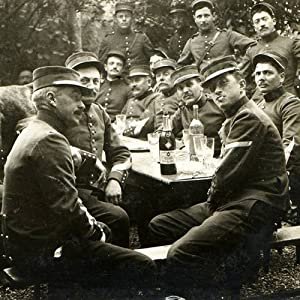
Todo este revuelo atrajo la atención del Mayor Dubied quien compró la receta a las monjas e inauguró en Couvet junto a su hijo Marcellin y su yerno Henry-Louis Pernod, la primera destilería de absenta en 1797, la cual nombró “Dubied Pére et Fils”. Comenzó a producir la absenta a gran escala y tuvo tanto éxito que ocho años después, en 1805, abrieron en Pontarlier la segunda destilería que llamaron “Maison Pernod Fils”. Poco a poco la absenta se transformó en la bebida favorita de artistas, escritores, bohemios e intelectuales en general de “l´art nouveaux” y La Belle Epoque, por lo que era ampliamente consumida en bares, tabernas, cafés y cabarets a lo largo y ancho de toda Francia, hasta convertirse en la bebida más popular de ese país, donde para finales del siglo XIX se estima que solamente en Francia, se consumían alrededor de 2 millones de litros de absenta al año. Sin embargo, fue iniciando el siglo XX que se le comenzó a considerar como la bebida nacional de Francia cuando en 1910, 36 millones de litros de absenta fueron consumidos por los franceses durante ese año.
All this commotion attracted the attention of Major Dubied who bought the recipe from the nuns and inaugurated in Couvet together with his son Marcellin and his son-in-law Henry-Louis Pernod, the first absinth distillery in 1797, which he named "Dubied Pére et Fils”. He began producing absinth on a large scale and was so successful that eight years later, in 1805, they opened the second distillery in Pontarlier, which they called “Maison Pernod Fils”. Little by little, absinth became the favorite drink of artists, writers, bohemians and intellectuals in general from "l'art nouveaux" and the Belle Epoque, which is why it was widely consumed in bars, taverns, cafes and cabarets throughout and wide of all France, until it became the most popular drink in that country, where by the end of the 19th century it is estimated that in France alone, around 2 million liters of absinth were consumed per year. However, it was at the beginning of the 20th century that it began to be considered as the national drink of France when in 1910, 36 million liters of absinth were consumed by the French during that year.


Obviamente que la Pernod Fils se convirtió en la marca de referencia por excelencia cuando se hablaba de la absenta y no pasó mucho tiempo para que esta bebida se comercializara por toda Europa e inclusive, su fama logró cruzar el Atlántico para hacer nuevos adeptos en Estados Unidos. El característico color verde de la absenta hizo que fuese bautizada como “La Fée verte” o “El Hada verde” entre los consumidores y su popularidad llegó a tal punto que los bares, restaurantes, cabarets y demás dispensarios, le asignaron una hora especial y ya para finales de 1860, la 5 de la tarde se consideraba, “L´heure verte” (La hora verde).
Obviously, Pernod Fils became the benchmark brand par excellence when it came to absinth and it didn't take long for this drink to be marketed throughout Europe and even its fame managed to cross the Atlantic to make new followers in the United States. The characteristic green color of absinth caused it to be baptized as "La Fée verte" or "The Green Fairy" among consumers and its popularity reached such a point that bars, restaurants, cabarets and other dispensaries assigned it a special time and by the end of 1860, 5 in the afternoon was considered, "L´heure verte" (The green hour).
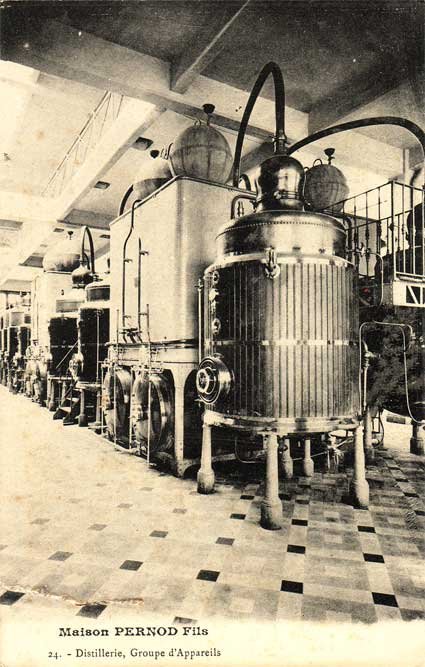
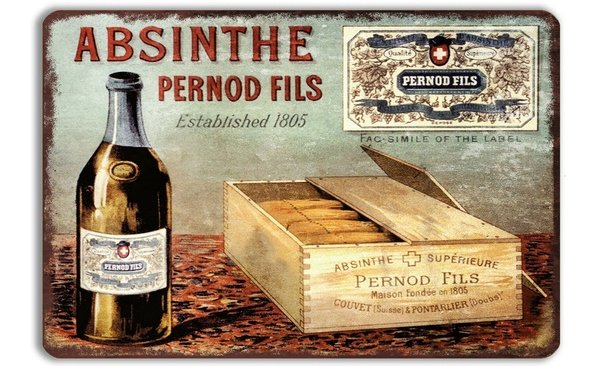
En un principio, el alcohol base para elaborar la absenta era el alcohol de vino pero debido a que este subió de precio, los productores del destilado verde decidieron empezar a elaborarla con alcohol industrial, este cambio hizo posible reducir el costo de producción hasta 10 veces, por lo que el Hada Verde pasó a ser el “alcohol de los pobres”. La absenta era fácil de conseguir y era barata, que mejor bebida entonces para la mayoría de artistas e intelectuales que por lo general eran pobres y a lo único que podían acceder era al alcohol más barato, o sea, la absenta. Así pues, la absenta se convirtió en parte importante de todo el movimiento bohemio, atribuyéndole el don de inspirar a los artistas y entre sus adeptos estaban Van Gogh, Monet, Rimbaud, Picasso, Hemingway, Baudelaire, Pessoa, Oscar Wilde, Mary Shelley, Degas, Gauguin, Edgar Allan Poe, Toulouse-Lautrec, Verlaine, Twain, entre otros, aunque la verdad es que era consumida ampliamente por todo el mundo, ricos, pobres, hombres y mujeres.
At first, the base alcohol to make absinth was wine alcohol but due to its price rice, the producers of the green distillate decided to start making it with industrial alcohol, this change made it possible to reduce the production cost up to 10 times, so the Green Fairy became the “alcohol for the poor”. Absinth was easy to find and cheap, what a better drink then for most artists and intellectuals who were generally poor and the only thing they could buy was the cheapest alcohol, that means, absinth. So, absinth became an important part of the entire bohemian movement, giving it the gift of inspiring artists and among its followers were Van Gogh, Monet, Rimbaud, Picasso, Hemingway, Baudelaire, Pessoa, Oscar Wilde, Mary Shelley, Degas, Gauguin, Edgar Allan Poe, Toulouse-Lautrec, Verlaine, Twain, among others, although the truth is that it was widely consumed by everyone, rich, poor, men and women.
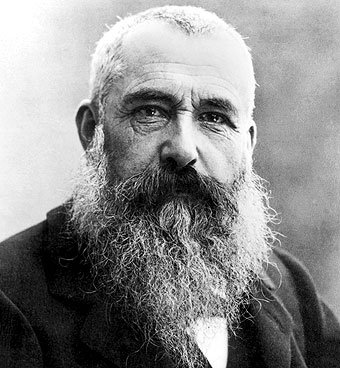


Aunque su nombre más popular es el que le dieron en Francia, Verte (Verde), en Alemania le decían Housgemacht (hecha en casa), por los tiempos de prohibición que se comenzó a preparar de manera clandestina, y en Suiza y la República Checa, donde sólo se preparaba con ajenjo y alcohol, se le conocía como Bleu (Azul).
Although its most popular name is the one they gave it in France, Verte (Green), in Germany they called it Housgemacht (homemade), due to the prohibition times that began to be prepared clandestinely, and in Switzerland and the Czech Republic, where it was only prepared with absinthe and alcohol, it was known as Bleu (Blue).

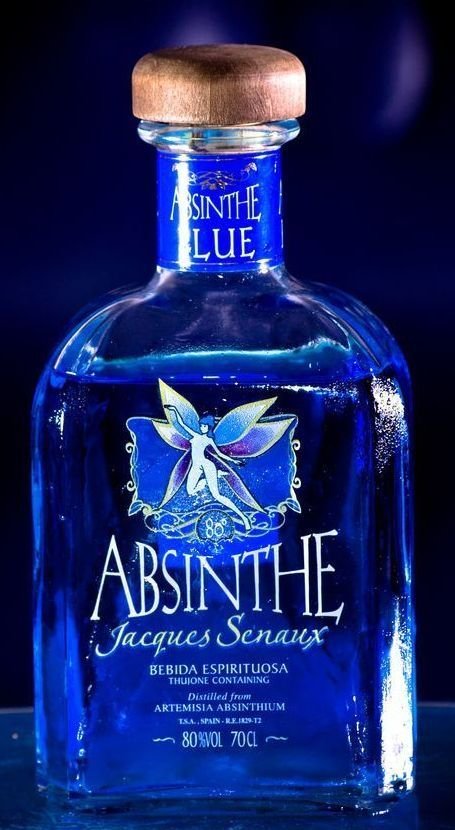
Ya para 1880 el precio de la absenta había subido considerablemente gracias a la alta demanda que había. Todo esto la convirtió en la bebida más popular, la más consumida y la favorita de toda Francia. Ya se sabe que cuando algo adquiere gran notoriedad, no tardarán en llegarle sus detractores. Pues bien, el hecho de que la absenta estaba asociada a artistas y escritores, algunos de dudosa reputación y escandalosas vidas personales, y muchos de los cuales admitían que le atribuían parte de su inspiración al Hada verde, los rumores de que la absenta inducía ese tipo de comportamiento no muy bien visto por la sociedad de esa época, comenzaron a multiplicarse por todos lados.
By 1880 the price of absinth had risen considerably thanks to the high demand there was. All this made it the most popular drink, the most consumed and the favorite in all of France. It is already known that when something acquires great notoriety, it will not take long for its detractors to reach it. Well, the fact that absinth was associated with artists and writers, some of dubious reputations and scandalous personal lives, and many of whom admitted that they attributed part of their inspiration to the Green Fairy, rumors that absinth induced that type of behavior not very well seen by the society of that time, began to multiply everywhere.
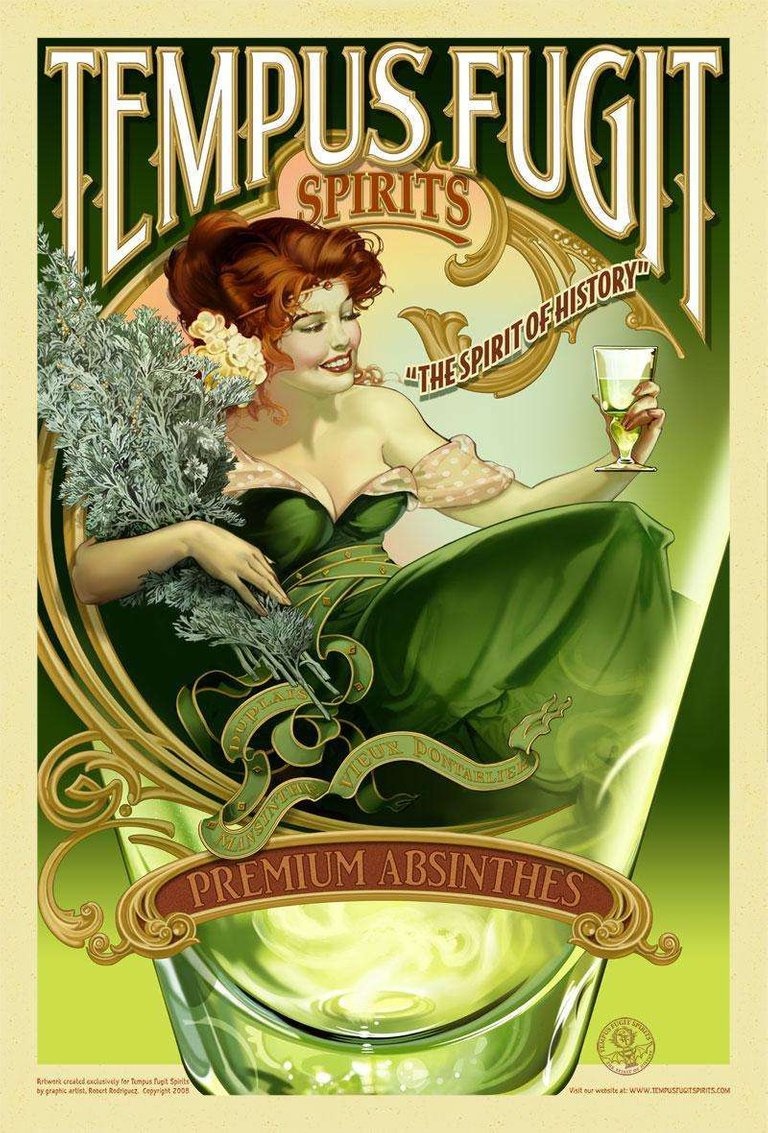
Se decía que la absenta provocaba alucinaciones, diversos episodios psicóticos y hasta la locura, por lo que muchos países decidieron prohibirla. Parte de esta mala fama fue culpa de absentas falsificadas elaboradas a base de productos tóxicos de dudosa procedencia así como mezclas de zinc, índigo y cobre para lograr el sabor y color que identifican a este destilado. Como era de esperar, estas bebidas falsificadas provocaban diversos daños al organismo y quien terminaba pagando por los platos rotos era la absenta.
Absinth was said to cause hallucinations, various psychotic episodes and even insanity, so many countries decided to ban it. Part of this bad reputation was the fault of counterfeit absinthes made from toxic products of doubtful origin as well as mixtures of zinc, indigo and copper to achieve the flavor and color that identifies this distillate. As expected, these counterfeit drinks caused many damage to the body and absinth ended up paying for the consequences.
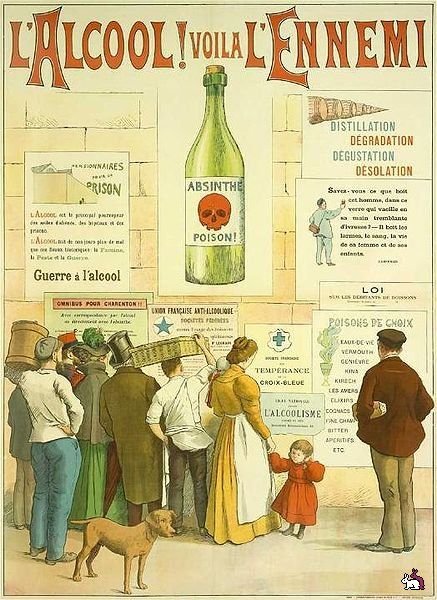
Para mayor desgracia del Hada Verde, en 1905, un suizo de nombre Jean Lafran, asesinó a tiros a su mujer y a sus dos hijas porque según él, se habían negado a limpiarle los zapatos. El susodicho estaba hasta la médula de borracho y en el juicio declaró que entre todo lo que había tomado, brandy, vino, coñac y crema de menta, también había ingerido dos copas de absenta. La prensa culpó al Hada Verde como causante de ese momento de locura y se logró que más de 80.000 personas firmaran para que la absenta fuese prohibida. Las fuertes campañas de desprestigio lograron dejar en el olvido al ajenjo y mantener a la absenta prácticamente en el anonimato durante más de 70 años, lo cual la transformó en una misteriosa bebida de culto.
To the greater misfortune of the Green Fairy, in 1905, a Swiss named Jean Lafran shot and killed his wife and two daughters because, according to him, they had refused to clean his shoes. The aforementioned was drunk to the core and at the trial he declared that among all that he had taken, brandy, wine, cognac and mint cream, he had also ingested two glasses of absinth. The press blamed the Green Fairy as the cause of that crazy moment and more than 80,000 people signed to ban absinth. Strong smear campaigns managed to obliterate absinthe and keep absinth virtually anonymous for more than 70 years, transforming it into a mysterious cult drink.
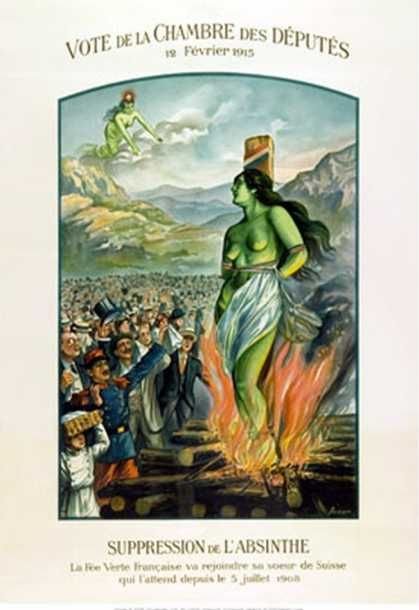
Esta ola anti-absenta comenzó a extenderse por toda Europa, siendo Bélgica el primer país en prohibir su consumo en 1905 así como su producción, importación, distribución y comercialización. Siguieron su ejemplo Suiza en 1908, Holanda en 1910, Estados Unidos en 1912 y por último, Francia en 1915. España, Reino Unido y la República Checa fueron los únicos que se mantuvieron al margen y siguieron produciendo y comercializando la absenta, a pesar que su consumo decayó notablemente hasta casi desaparecer. De hecho, tras la prohibición, la Pernod Fils se trasladó a España para seguir produciendo. No pasó mucho tiempo para que la misteriosa bebida comenzara a ser elaborada en destilerías clandestinas, lo que ayudó a forjar su leyenda de prohibida droga supuestamente alucinógena.
This anti-absinth wave began to spread throughout Europe, with Belgium being the first country to ban its consumption in 1905 as well as its production, import, distribution and marketing. Switzerland followed in 1908, the Netherlands in 1910, the United States in 1912, and finally France in 1915. Spain, the United Kingdom, and the Czech Republic were the only ones to stay on the sidelines and continued to produce and market absinth, despite the fact that its consumption decreased notably until it almost disappeared. In fact, after the ban, Pernod Fils moved to Spain to keep producing. It didn´t take long for the mysterious drink to begin to be made in clandestine distilleries, which helped to forge its legend of a banned, supposedly hallucinogenic drug.
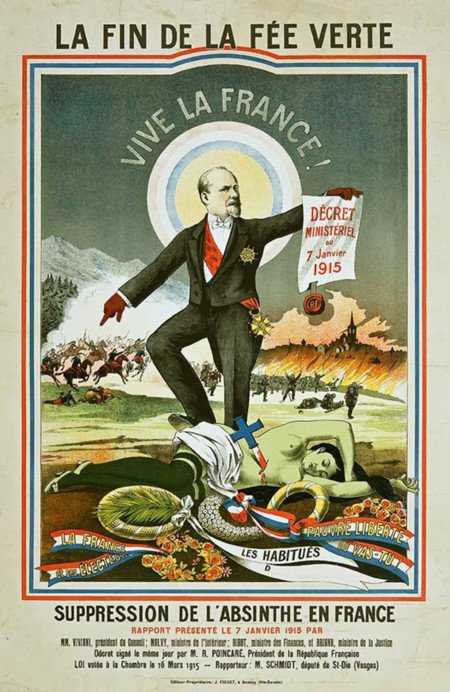
Pero ¿fue simplemente la fuerza de un rumor lo que condujo a la absenta casi al olvido y a su satanización o hubo algo más? Bueno, antes de que el Hada verde se posicionara como la bebida favorita de los franceses y de toda la Europa bohemia, la bebida que más se consumía era el vino. El consumo de vino era cada vez menor y por consiguiente la venta se redujo y los ingresos cayeron considerablemente, sin contar con que la mayoría de los viñedos estaba siendo azotada por plagas que habían desmejorado la calidad de las cosechas. El bajo costo de producción del ajenjo era otro punto a favor de la absenta en comparación con el del vino que era mucho más alto. Los propietarios de los más grandes viñedos, entre los que destacaba la iglesia, que se auto financiaba principalmente a través de sus viñedos y licores, estaban hartos de ver cómo sus ingresos se desplomaban por culpa de la absenta y crearon esta ola de rumores para destruir su imagen y hacerla ver como un veneno que representaba un peligro para la sociedad. Sin duda fue una jugada sucia bien planificada, impulsada más por intereses económicos y comerciales que por supuestas moralidades sociales, para volver a posicionar el vino en el mercado y recuperar lo que habían perdido.
But, Was it simply the force of a rumor that led to the near-oblivion and demonization of absinth, or was there something else? Well, before the Green Fairy was positioned as the favorite drink of the French and all of Bohemian Europe, the most widely consumed drink was wine. Wine consumption was decreasing and therefore sales were reduced and income fell considerably, not to mention that most of the vineyards were being plagued by pests that had deteriorated the quality of the harvests. The low production cost of absinth was another point in favor of absinth compared to that of wine, which was much higher. The owners of the largest vineyards, notably the church, which financed itself mainly through its vineyards and spirits, were fed up with seeing their income plummet due to absinth and created this wave of rumors to destroy her image and make it look like a poison that represented a danger to society. It was undoubtedly a well-planned dirty move, driven more by economic and commercial interests than by alleged social moralities, to put the wine back on the market and regain what they had lost.
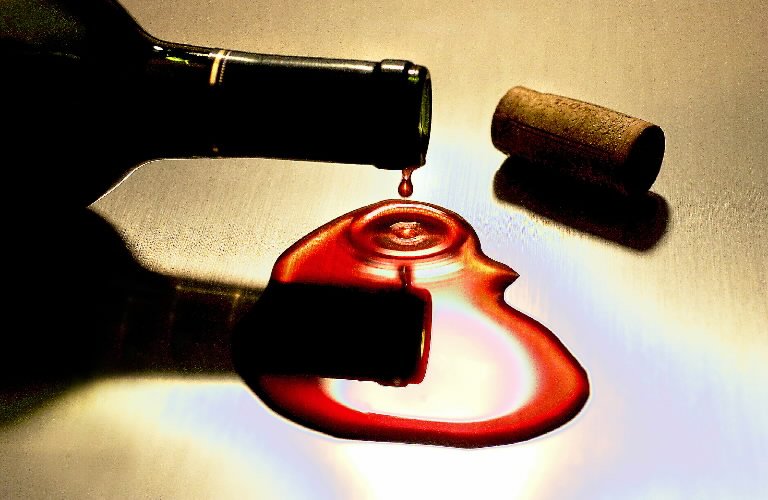
Comenzando los años 90 del pasado siglo, los países donde la absenta estaba prohibida decidieron revisar sus leyes y levantar las prohibiciones, permitiendo así nuevamente su producción, distribución, comercialización y consumo. Francia, su otrora país de mayor consumo volvería a abrirle las puertas de libre circulación a la absenta en el año 2011, 96 años después. El Hada Verde ya podía volar nuevamente entre las copas de los franceses pero sin poder usar su nombre oficial.
Beginning in the 90s of the last century, the countries where absinth was prohibited decided to review their laws and lift the prohibitions, allowing again its production, distribution, commercialization and consumption. France, its former country of greatest consumption, would reopen the doors of free circulation to absinth in the year 2011, 96 years later. The Green Fairy could now fly again between the glasses of the French but without being able to use her official name.
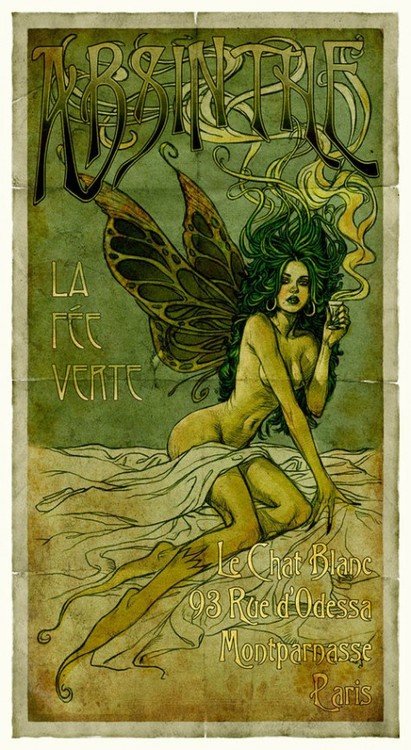
¿Cómo se elabora la absenta?
Como bien lo indica su nombre, el ingrediente principal de esta bebida es el ajenjo (Artemisia Absinthium), de ahí su nombre de absenta, y completan la base de la receta, flores de hinojo (Foeniculum vulgare) y el anís verde (Pimpinella anisum). A estas tres plantas, consideradas el alma de la absenta, se les conoce como “La Santísima Trinidad”. En primer lugar, hay que considerar la materia prima, en este caso, el ajenjo, las destilerías cuentan con sus propias plantaciones para asegurar la calidad del mismo y la mejor época para hacer la recolección es la segunda mitad del verano en horas de la mañana hasta el mediodía cuando la planta alcanza la mayor saturación de aceites esenciales, este proceso se realiza de forma manual y las ramas se cortan entre 25 y 30 cms. de largo. La disposición de las flores y las hojas pequeñas garantizan una absenta de mejor calidad. A esta base y dependiendo del gusto se le pueden añadir en menores cantidades: melisa, hisopo, raíz de angélica, cilantro, regaliz, menta, hojas de enebro, nuez moscada entre otras plantas medicinales y hierbas silvestres. Sin embargo, en la mayoría de los casos, estos agregados se consideran una variación. El ajenjo es la sustancia predominante, esta planta no sólo le aporta a la absenta su característico sabor sino también unos componentes químicos llamados tujonas o tuyonas, responsables de su controvertida fama.
How is absinthe made?
As its name indicates, the main ingredient in this drink is absinthe (Artemisia Absinthium), that´s where its name absinth comes from, fennel flowers (Foeniculum vulgare) and green anise (Pimpinella anisum) complete the base of the recipe. These three plants, considered the soul of absinth, are known as "The Holy Trinity." First of all, we must consider the raw material, in this case, absinthe, distilleries have their own plantations to ensure its quality and the best time to harvest is the second half of summer in the morning hours until noon when the plant reaches the highest saturation of essential oils, this process is carried out manually and the branches are cut between 25 to 30 cm. long. The arrangement of the flowers and small leaves ensures a better quality absinth. To this base and depending on taste, lemon balm, hyssop, angelica root, coriander, licorice, mint, juniper leaves, nutmeg among other medicinal plants and wild herbs can be added in smaller quantities. However, in most cases, these aggregates are considered a variance. Absinthe is the predominant substance; this plant not only gives absinth its characteristic flavor but also chemical components called thujones, responsible for its controversial fame.
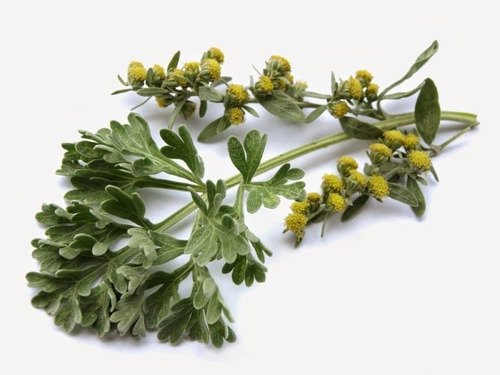

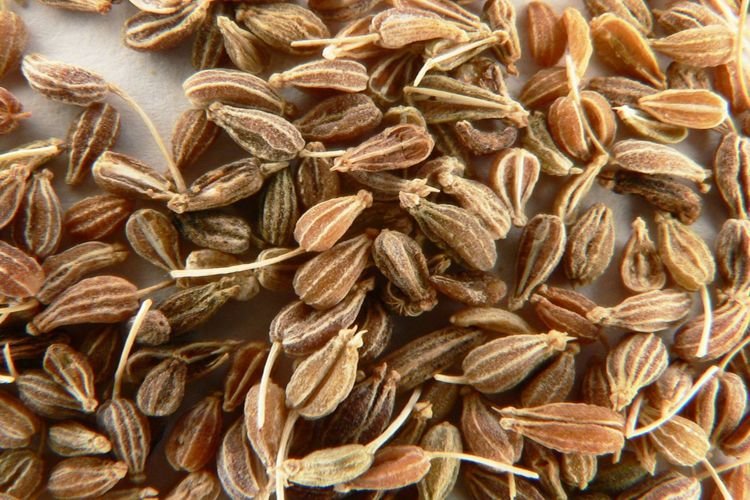
La tujona (composición química, C10H16O), es un aceite esencial incoloro, de olor mentolado y relacionado con el alcanfor que se encuentra en gran proporción en el ajenjo y que consumida en altas dosis puede provocar intoxicación y convulsiones por ser un potente neurotóxico, no así alucinaciones como se llegó a pensar en el siglo XIX y buena parte del siglo XX. Cabe destacar que durante el siglo XIX, no se regulaban las tujonas procedentes del ajenjo por lo que muy probablemente la absenta que se consumía en esa época era mucho más potente que la que se elabora en nuestros días. Aunque es un componente ciertamente peligroso, de uso totalmente prohibido en la Unión Europea como aditivo a cualquier alimento, en la absenta, presenta una concentración entre 0 a 50 mg/l, lo cual no representa un riesgo para la salud, sin embargo en la mayoría de los países el límite permitido es de máximo hasta 35 mg/l, lo que alimenta la curiosidad y culto hacia El Hada Verde.
Thujone (chemical composition, C10H16O), is a colorless essential oil with minty smell and related to camphor found in a large proportion in absinthe and consumed in high doses can cause intoxication and seizures because it is a powerful neurotoxic, although doesn’t cause hallucinations, as came to be thought in the 19th century and much of the 20th century. It should be noted that during the 19th century, thujones from absinthe weren´t regulated, so most likely the absinth consumed at that time was much more potent than that produced today. Although it is a certainly dangerous component, of totally prohibited use in the European Union as an additive to any food, in absinth, it has a concentration between 0 to 50 mg/l, which does not represent a risk to health, however in the most of the countries the allowed limit is of maximum up to 35 mg/l, which feeds the curiosity and cult towards The Green Fairy.

Antes de explicar su elaboración, es importante resaltar que la absenta no es un licor sino un destilado. Su elaboración consiste en dos etapas. En la etapa uno, se lleva a cabo la primera maceración sin destilación del ajenjo (Artemisia Absinthium), las flores de hinojo ( Foeniculum vulgare) y el anís (Pimpinella anisum) en un alambique de cobre y con un alcohol base que sea neutro y transparente como el ron blanco, aunque preferiblemente, alcohol de uvas blancas. En este proceso, que puede durar hasta 48 horas, el alcohol absorberá el aroma y el sabor de las plantas. En la etapa dos se destila ese macerado para eliminar las notas amargas y manipular a gusto la intensidad del sabor, en este proceso, se genera una disolución alcohólica de hasta un 72% de concentración de alcohol. Una vez destilado, se vuelve a macerar la mezcla en otro alambique y se le añade el líquido resultante de la destilación, este consistirá en una mezcla de hierbas según la receta de cada maestro (ajenjo menor, hisopo, melisa, etc.) en esta etapa, la clorofila de todos estos ingredientes es transferida a la absenta y poco a poco va apareciendo el característico color verde esmeralda que es completamente natural. El resultado es una bebida muy amarga de sabor ligeramente anisado y una altísima concentración alcohólica.
Before explaining its preparation, it is important to note that absinth isn´t a liquor but a distillate. Its elaboration consists of two stages. In stage one, the first maceration without distillation of the absinthe (Artemisia Absinthium), the fennel flowers (Foeniculum vulgare) and the anise (Pimpinella anisum) in a copper alembic is carried out in a base alcohol that is neutral and transparent such as white rum although preferably white grape alcohol. In this process, which can last 48 hours, the alcohol will absorb the aroma and flavor of the plants. In stage two, this macerate is distilled to eliminate bitter notes and manipulate the intensity of the flavor at will, in this process; an alcoholic solution of up to 72% alcohol concentration is generated. Once distilled, the mixture is macerated again in another alembic and the liquid resulting from the distillation is added, this will consist of a mixture of herbs according the recipe of each master (absinthe, lemon balm, hyssop, etc.), at this stage, the chlorophyll of all these ingredients is transferred to absinth and little by little the characteristic emerald green color that is completely natural appears. The result is a very bitter drink with a slightly aniseed flavor and a very high alcoholic concentration.
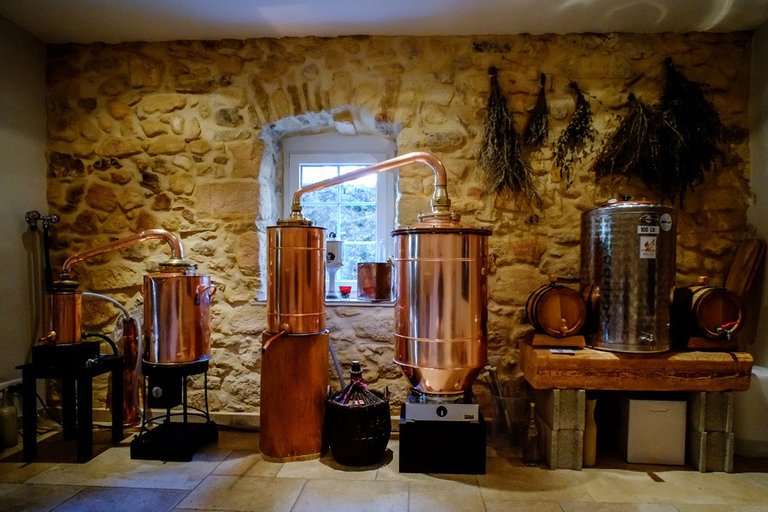

Lastly, and to adjust its alcoholic concentration to what is desired, it is lowered with water, stored in a dry, cool place away from light and left to age for three to six months. Keeping the distillate in a dark place will help the chlorophyll present in it not to oxidize and therefore retain the beautiful green color that identifies absinth (although a very light and vivid color may indicate that it has not aged enough or artificial colors have been added), however, if the drink is left exposed to light, absinth will take on an amber color that doesn´t alter its flavor or quality and that even gives her a vintage touch. There are naturally colored absinthes on the market made in a natural way, red absinth is made adding pomegranate extract or hibiscus flowers, blue with blueberries and black with a black acacia infusion and absinthe roots although many brands use colorants for those purposes. White absinth is obtained by reducing the first maceration distillate until it reaches 60% of alcohol.
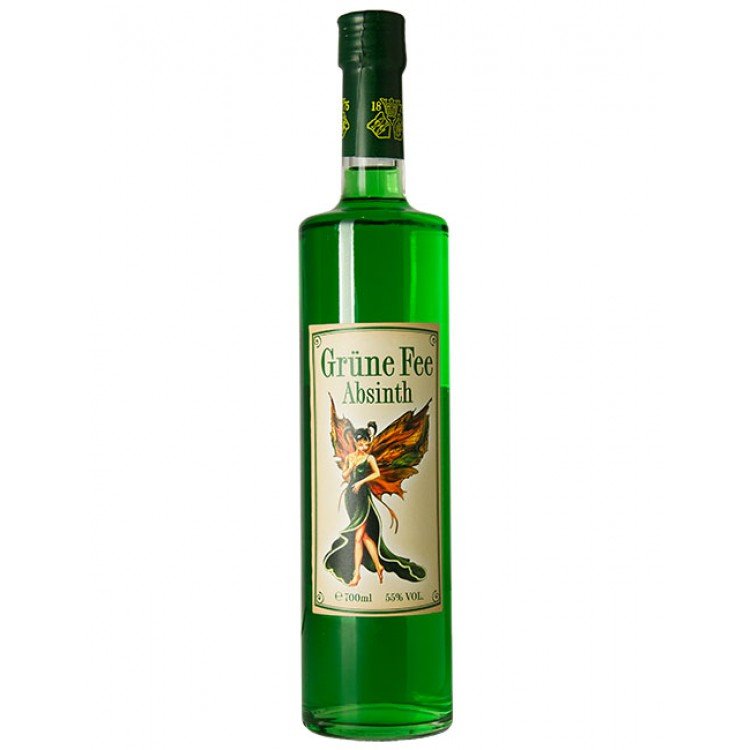
El grado alcohólico de la absenta es extremadamente alto, siendo por lo general de un mínimo de 45° hasta un máximo de 89,9°. Es esta alta concentración de alcohol la que puede traer problemas si se abusa de su consumo y no las tujonas que contiene que ya de por si son reducidas y están limitadas por la ley. Así que lo peor que le puede pasar a alguien que se le pase la mano con la absenta, será una muy fuerte borrachera cuyas consecuencias si que no se pueden predecir. Con el tiempo, los científicos le pusieron más atención al ajenjo y pudieron comprobar que la absenta no era perjudicial para la salud, lo que llevó a que en muchos países se levantara su prohibición.
The alcoholic strength of absinth is extremely high, generally ranging from a minimum of 45 ° to a maximum of 89,9°. It´s this high concentration of alcohol that can cause problems if its consumption is abused and not the thujones it contains, which are already reduced and are limited by law. So the worst thing that can happen to someone who goes too far with absinth will be a very strong drunkenness whose consequences can´t be predicted. Over time, scientists paid more attention to absinthe and found that absinth wasn´t harmful to health, which led to its ban in many countries being lifted.

(Foto tomada por mi hermana @sofathana en una tienda del barrio gótico de Barcelona, España / Photo taken by my sister @sofathana in a store of the gothic neighborhood in Barcelona, Spain)
Existen tres clasificaciones para la absenta según su graduación alcohólica y calidad, Ordinaire (45% - 50%), Fine (55% - 68%) y Suisse (68% en adelante). Los mayores productores de absenta son Francia, República Checa, Reino Unido y Suiza, siendo este último país el único que tiene una definición legal de la composición y proceso de elaboración de la absenta. Otros países que están incursionando en la producción de absenta son Italia, Holanda, Alemania, Estados Unidos, Rusia, Bulgaria y Ucrania. Actualmente se pueden conseguir unas 200 marcas en el mercado y los precios varían entre 10$ y más de 40$ dependiendo de la marca, la calidad y la pureza de la absenta.
There are three classifications for absinth according to its alcoholic strength and quality, Ordinaire (45% - 50%), Fine (55% - 68%) and Suisse (68% onwards). The largest producers of absinth are France, the Czech Republic, the United Kingdom and Switzerland, this last being the only one that has a legal definition of the composition and process of making absinth. Other countries that are entering the production of absinth are Italy, the Netherlands, Germany, the United States, Russia, Bulgaria and Ukraine. Currently around 200 brands are available on the market and prices vary between 10$ to more than 40$ depending on the brand, quality and pureness of absinth.
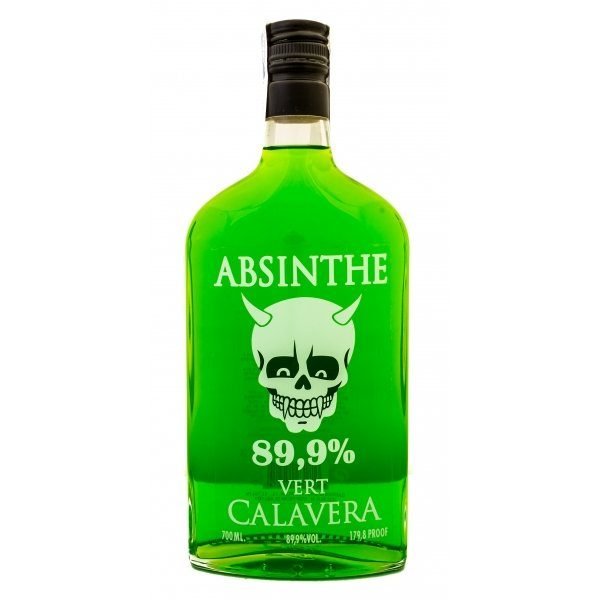
No es fácil ni barato conseguir absenta de calidad, pura y preparada de la manera tradicional, primero porque en muchos de los países donde está permitida su venta y consumo, no existen regulaciones ni restricciones para etiquetar cualquier bebida alcohólica con el nombre de absenta, esté o no elaborada como debe ser y con los ingredientes originales, por lo que es difícil establecer un control de calidad, y segundo, porque las pocas destilerías que elaboran el Hada Verde siguiendo el método original y tradicional se distinguen del resto no sólo por la calidad del destilado sino también por los elevados precios. En este sentido se aconseja no dejarse llevar por la curiosidad, el atractivo de una botella exótica, de una etiqueta llamativa o de un color verde esmeralda demasiado vívido porque lo barato puede salir caro. Una buena absenta debe tener más de 68% de alcohol, un amargo sabor anisado, contener un mínimo de 10 mg/l de tujonas (mejor si tiene 35 mg/l) y un color verde natural.
It´s not easy or cheap to get quality absinth, pure and prepared in the traditional way, firstly because in most countries where her sale and consumption is allowed, there are no regulations or restrictions to label any alcoholic beverage with the name of absinth, whether or not it is made as it should be and with the ingredients that characterize her, so it´s difficult to establish quality control, and secondly, because the few distilleries that make the Green Fairy following the original and traditional method are distinguished from the rest not only by the quality of the distillate but also by the high prices. In this sense, it is advisable not to get carried away by curiosity, the attractiveness of an exotic bottle, a striking label or an overly vivid emerald green color because cheap things are dear in the long run. A good absinth should have more than 68% alcohol, a bitter anise flavor, contain a minimum of 10 mg/l of thujones (better if has 35 mg/l) and a natural green color.
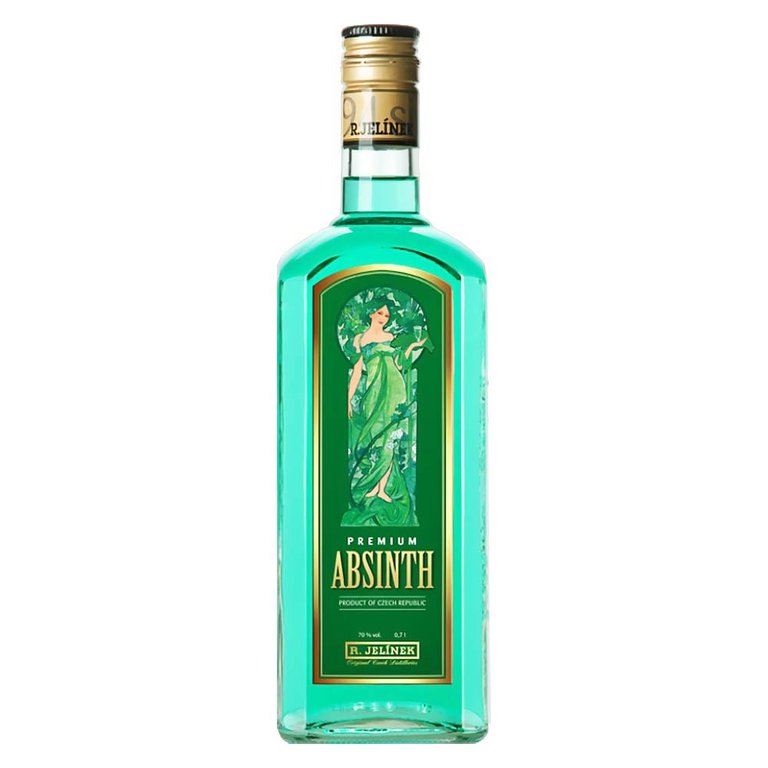
Muchas compañías realizan imitaciones de absenta modificando la receta original y agregando plantas como cannabis o marihuana, a efecto de vender un producto con supuestas propiedades alucinógenas que la absenta como tal no posee. Cabe destacar que estas variaciones que se consiguen en el mercado no solo no tienen nada que ver con el famoso destilado verde sino que tampoco están hechos siguiendo el método original. Solo son productos adulterados que usan el nombre y el color de la absenta (y por consiguiente todo su atractivo) para atraer clientes curiosos e ingenuos y hacer dinero.
Many companies make imitations of absinth by modifying the original recipe and adding plants such as cannabis or marijuana, in order to sell a product with supposed hallucinogenic properties that absinth as such doesn´t possess. It should be noted that these variations that are available on the market not only have nothing to do with the famous green distillate, but they´re also not made following the original method. They are just adulterated products that use the name and color of absinth (and therefore all its appeal) to attract curious and naive customers and make money.
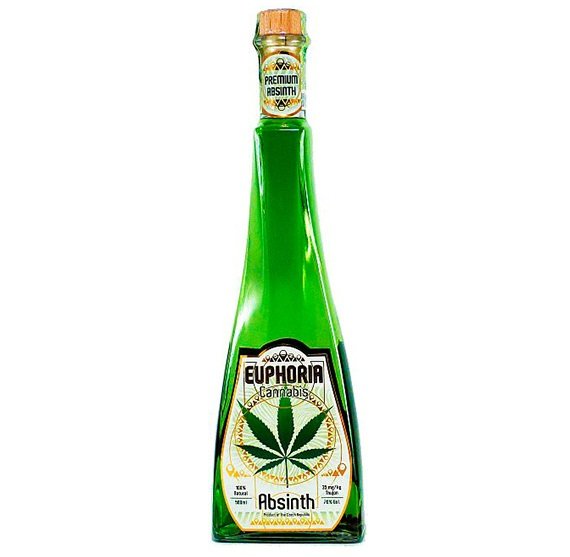
Continuará...
To be continue...
Very interesting article! I've always been curious about this drink but never researched it. Thank you for for this history lesson 🙂
Can't wait for part 2.
Hi! You´re welcome, thank you very much for your support, you can already read the second part ;-)
Hola, Se dice que Van Gogh se cortó la oreja para pintársela bajo la influencia del Hada Verde, Las tuyonas o Tujonas si causan alucinaciones, pero como dices hay muchas falsificaciones e imitaciones. Un grado de mas 80% también tendrá el poder tóxico para hacerte alucinar 🤣 Por cierto Picasso y muchísimos artistas famosos que no nombraste tomaron de ella. Me ha gustado mucho tu post, espero la 2da parte!
Hola! muchas gracias! Lo que crees que falta en realidad no falta porque está en la segunda parte jejeje, lo iba a publicar de una pero la plataforma no me lo permitía por ser muy largo así que tuve que dividirlo en dos. Saludos y gracias por el apoyo y por leer.
😍espero por ella!🙃 de verdad estuvo muy buena y entretenida la 1ra parte🤓
jejeje, gracias! Ya puedes leer la segunda parte de esta interesante bebida, saludos!
Muy interesante la historia de esta bebida, excelente post :)
Así es, muchas gracias!
I remember drinking Absinth for the first time, many years ago. I liked the procedure of burning a sugar cube and letting it drop into the liquid.
But the taste... Well... Like mouthwash and the 70% alcohol content wasn't really enjoyable either.
But hey, it was cool, right? :D
ahahahaha ¿really? well, I haven´t prove absinth yet but they all say that is very bitter, so that´s the sugar for, burn the sugar changes the taste of absinth that´s why pourists don´t like it. You can read the second part, it´s already available, thank for the support ;-)
Por eso me llamó la atención tú post. Yo también una vez oí hablar de esa bebida y me lleno de curiosidad. Hasta que supe que era fabricada de una de las plantas medicinales que tengo en casa y la cual ocupo para hacer infusiones. Excelente post 👍
Hola! Me alegra que te haya gustado, si, ciertamente ese misterio que hay detrás de ella es muy atractivo y si, el ajenjo es una de las plantas con más propiedades terapéuticas. Ya puedes leer la segunda parte. Gracias por leer y por el apoyo, saludos!